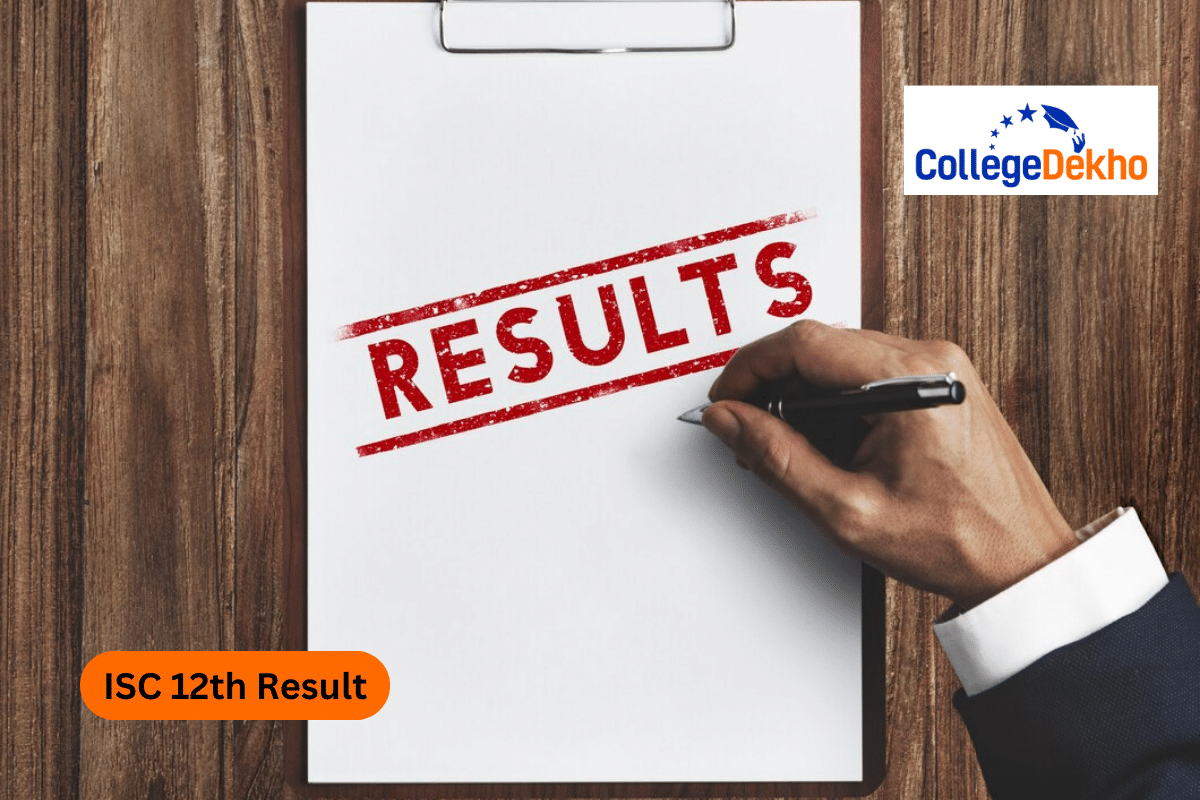

Never Miss an Exam Update
AP Intermediate Chemistry Syllabus 2024-25: The Board of Intermediate Education, Andhra Pradesh released a detailed syllabus PDF for Intermediate students. The syllabus includes all the details of the chapters and sub topics included in the Chemistry syllabus. The Chemistry subject includes 13 chapters in total. After downloading the AP Intermediate Chemistry Syllabus 2024-25, students plan a strategy to complete the syllabus on time and to save some time for revision as well. The AP Intermediate Chemistry Syllabus will assist students in getting the most out of their academic journey. The syllabus provided here will help students with a thorough knowledge of the BIEAP Chemistry course.
Students will also learn about a synopsis of each lesson, a question pattern, and the importance of each unit. These are the most current Class 12 syllabus that might be useful to state board students. Students can check the marking scheme to get an idea of the important chapters with the help of AP Intermediate Chemistry Previous year question papers . Once students will complete the syllabus they can start solving the sample papers or model papers to understand the pattern and marking scheme. To check the chapter-wise AP Intermediate Chemistry Syllabus, students can go through the article below.
AP Intermediate Chemistry Syllabus 2024-25: Download PDF
Get the link below to download the AP Intermediate Chemistry Syllabus 2024-25 PDF.
AP Intermediate Chemistry Syllabus 2024-25 Course Structure
The following table includes the detailed syllabus for the Chemistry subject. Prepare for the board exams after completing the syllabus in an organized manner.
Chapters | Important Topics |
|---|---|
Chapter 1: SOLID STATE |
General characteristics of solid-state
|
Chapter 2: SOLUTIONS |
Types of solutions
|
Chapter 3: ELECTROCHEMISTRY AND CHEMICAL KINETICS | ELECTROCHEMISTRY
Electrochemical cells
|
Chapter 4: SURFACE CHEMISTRY | Adsorption and absorption, mechanism of adsorption-types of adsorption characteristics of physisorption - adsorption from solution phase applications of adsorption, Emulsions, etc. |
Chapter 5: GENERAL PRINCIPLES OF METALLURGY | The occurrence of metals, magnetic separation, froth floatation, leaching, Extraction of crude metal from concentrated ore-conversion to oxide, Thermodynamic Principles of Metallurgy, Electrochemical Principles of Metallurgy, Oxidation and Reduction, Refining of Crude MetalUses of aluminium, copper, zinc and iron, etc. |
Chapter 6: p-BLOCK ELEMENTS | GROUP-15 ELEMENTS Occurrence- electronic configuration, atomic and ionic radii, ionisation energy, electronegativity, physical and chemical properties, Phosphorus halides, etc. GROUP-16 ELEMENTS Occurrence- electronic configuration, atomic and ionic radii, ionisation enthalpy, electron gain enthalpy, electronegativity, physical and chemical properties, Dioxygen-preparation, etc. GROUP-17 ELEMENTS Occurrence, electronic configuration, atomic and ionic radii, ionisation enthalpy, electron gain enthalpy, electronegativity, physical and chemical properties, etc. GROUP-18 ELEMENTS Occurrence, electronic configuration, ionisation enthalpy, atomic radii electron gain enthalpy, Xenon-oxygen, compounds XeO3 and XeOF4 - their formation and structures, etc. |
Chapter 7: d AND f BLOCK ELEMENTS & COORDINATION COMPOUNDS d AND f BLOCK ELEMENTS |
Position in the Periodic Table,
|
Chapter 8: POLYMERS | Types of polymerization reactions addition polymerization or chain growth polymerization-ionic polymerization, free radical mechanism-preparation of addition polymers-polythene, Teflon, Polymers of commercial importance polypropene, polystyrene, polyvinyl chloride(PVC), urea-formaldehyde resin, etc. |
Chapter 9: BIOMOLECULES |
Enzymes
: Enzymes, mechanism of enzyme action
|
Chapter 10: CHEMISTRY IN EVERYDAY LIFE | Chemicals in food artificial sweetening agents, food preservatives, Drug-enzyme interaction Receptors as drug targets, Cleansing agents-soaps and synthetic detergents, etc. |
Chapter 11: HALOALKANES AND HALOARENES | Classification and nomenclature, Nature of C-X bond, by the addition of hydrogen halides and halogens to alkenes-by halogen exchange, triiodomethane, tetrachloro methane, freons and DDT, etc. |
Chapter 12: ORGANIC COMPOUNDS CONTAINING C, H AND O (Alcohols, Phenols, Ethers, Aldehydes, Ketones and Carboxylic acids) | ALCOHOLS, PHENOLS AND ETHERS:
Classification – Alcohols, Phenols and Ethers
ALDEHYDES AND KETONES:
Nomenclature and structure of carbonyl group
CARBOXYLIC ACIDS:
|
Chapter 13: ORGANIC COMPOUNDS | CONTAINING NITROGEN AMINES: Structure of amines, Classification, Nomenclature, Preparation of amines: reduction of nitro compounds, ammonolysis of alkyl halides, reduction of nitriles, reduction of amides, Gabriel phthalimide synthesis and Hoffmann bromamide degradation reaction, Physical properties DIAZONIUM SALTS: Methods of preparation of diazonium salts (by diazotization), Physical properties, Chemical reactions: Reactions involving displacement of nitrogen, reactions involving retention of the diazo group CYANIDES AND ISOCYANIDES: Structure and nomenclature of cyanides and isocyanides, etc. |
How to Download AP Intermediate Chemistry Syllabus 2024-25?
Students can visit the official website of the AP Board to download the syllabus. Follow the AP steps given below to download the latest syllabus:
- Step 1: Go to the official website of the AP Board at https://bieap.apcfss.in/
- Step 2: Look for the “Syllabus and Resources” and click on Syllabus and Question Bank
- Step 3: You will get a list of various subjects on your screen
- Step 4: Find ‘Chemistry’ and click on download
AP Intermediate Chemistry Preparation Tips 2025
The students preparing for the Class 12 Chemistry examination should follow the preparation tips given below to ease their preparation process:- Understand the bonds, formulas, and rules: these are the foundations of chemistry. To get good grades, comprehend and absorb all the information regarding the responses.
- Practice formulae: Every day, practice the chemical reactions by writing down all of the formulas in a different notebook. Take note of specifics such as chemical structure. For example, know the difference between benzene and benzene derivatives.
- Memorise the periodic table: This is the most basic thing which every student should do at the beginning of their preparation. Revise the periodic table regularly.
- Know how to write the answer: The class 12 Chemistry exam assesses students' knowledge of the subject understanding as well as their presentation skills. Include headings and subheadings in each answer to increase clarity. Include an introduction, the chemical reaction that is involved, a diagram, pros and cons or uses, and a conclusion.
- Stick to the word limit: The students must stick to the word limit and follow the exam instructions while writing the answer. Write crisp and accurate answers. This helps in fetching marks.
- Practice papers and solve questions: After finishing the syllabus, make it a routine to solve at least one of the previous years’ papers daily within the stipulated time limit.
AP Intermediate Chemistry Reference Books
For AP Intermediate Chemistry, there are several reference books you might find helpful:| Reference Books | Description |
|---|---|
| Physical Chemistry by P. Bahadur | This book is a great resource for thoroughly comprehending the ideas of physical chemistry. To help you grasp it better, it offers a ton of practice problems and solved examples. |
| Morrison and Boyd's Organic Chemistry | This book is a great resource for organic chemistry. It provides a straightforward and succinct explanation of the basic ideas of organic chemistry. |
| Inorganic Chemistry by J.D. Lee | This book is popular for inorganic chemistry and is known for its comprehensive coverage of the subject. |
| Modern Approach to Chemical Calculations by R.C. Mukherjee | This book is great for practicing numerical problems in chemistry. It covers a wide range of problems from basic to advanced levels. |
Following these simple steps would help students to download the syllabus in the PDF format. After downloading the Chemistry syllabus, students can cover up all the topics. They can plan the study schedule and focus on scoring good marks in the board exams.
FAQs
You have to obtain a minimum score of 33 per cent in theory and practicals separately to pass the examination.
he time duration for writing the AP Intermediate Chemistry exam is 3 hours.
No, the questions are not directly extracted from the question papers from previous years. However, the question of paper pattern could be the same.
The New AP Intermediate Chemistry Syllabus 2025 consists of 12 units.
Students can divide the syllabus into smaller units and complete the syllabus in advance. They should keep sufficient time for revision.
After completing the Chemistry syllabus, students can try solving the sample papers and previous year question papers. With a good idea of the types of questions, it becomes easy for them to understand the questions and answer quickly.
Students can check the marking scheme mentioned by the AP board. Students can look for the topic that has the highest marks.
By visiting at https://bieap.apcfss.in/, students can get the link to download AP Intermediate Chemistry Syllabus 2023-24.
AP board has issued the AP Intermediate Chemistry Syllabus 2023-24 in a PDF format. Students can visit the official website to download the latest Chemistry syllabus.
Was this article helpful?

















